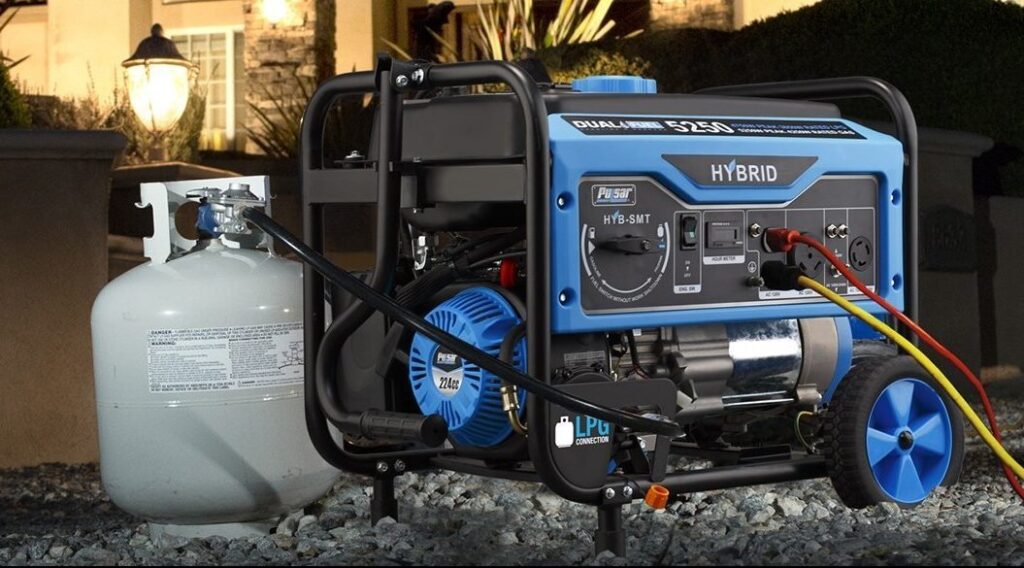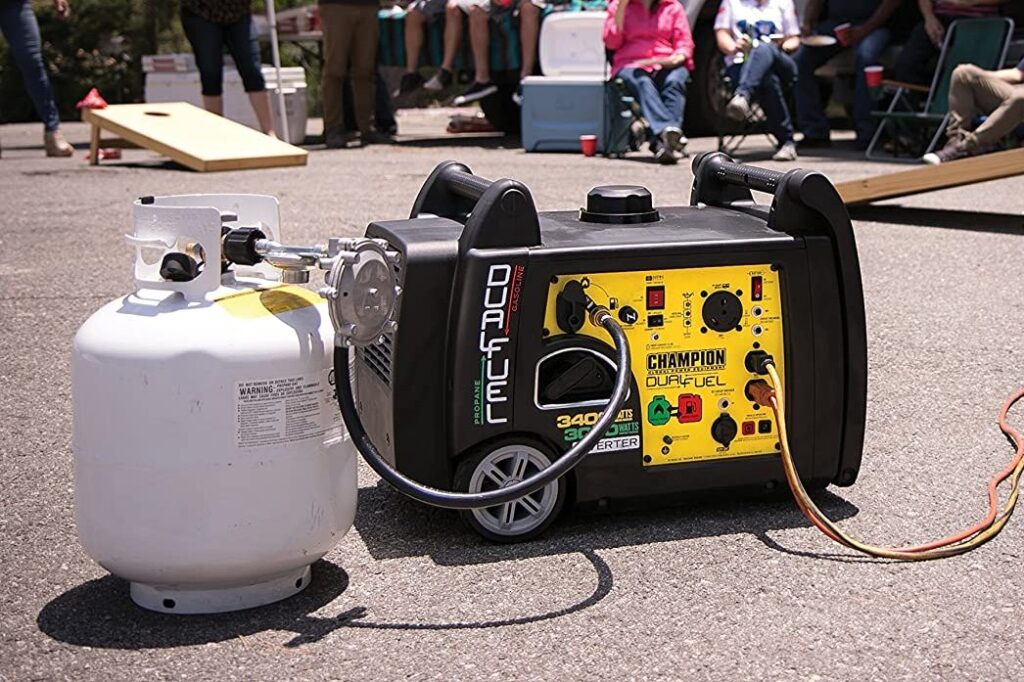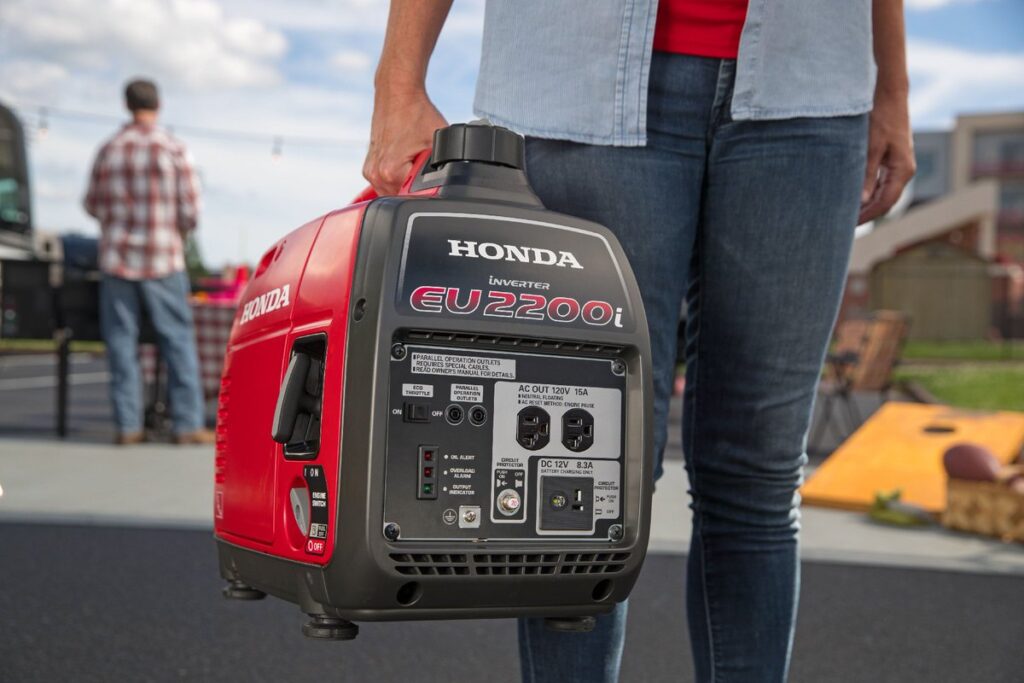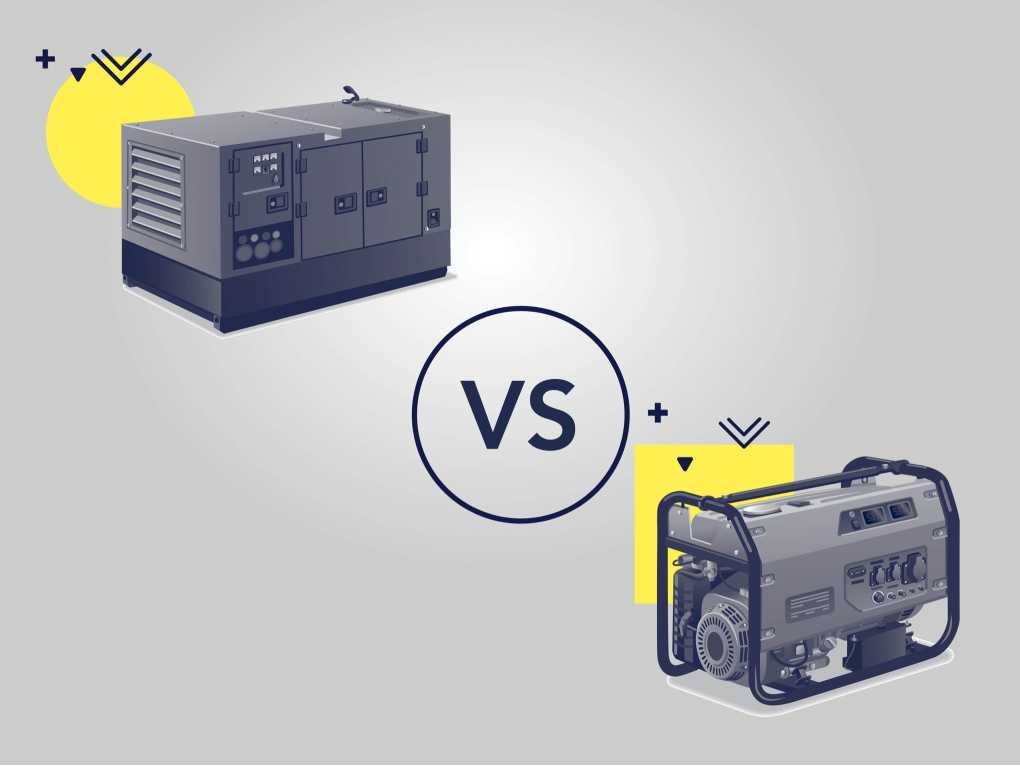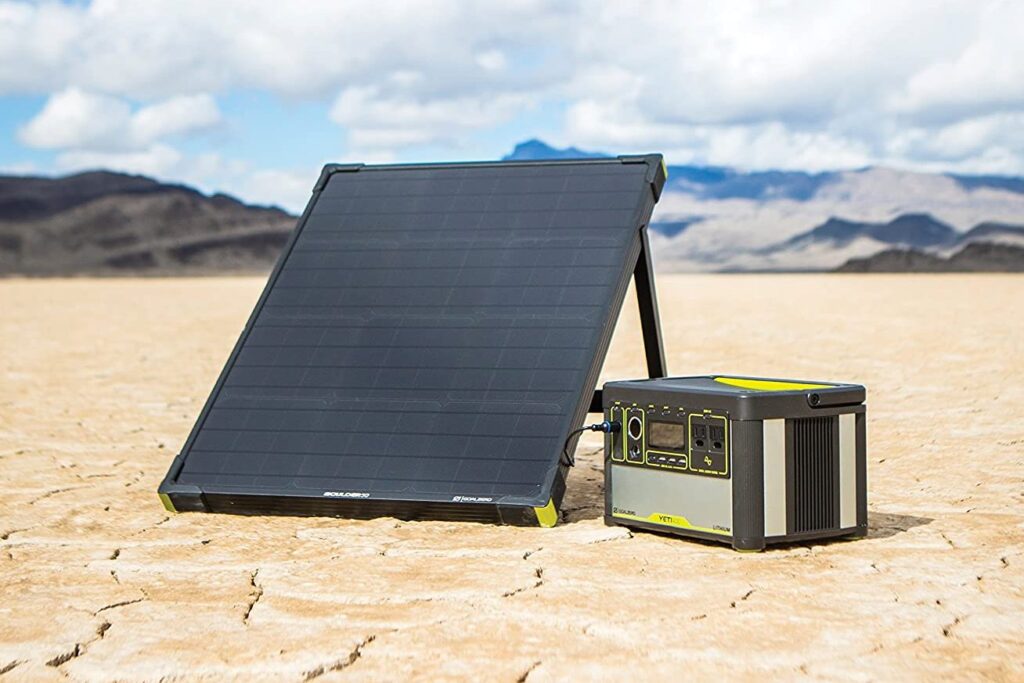While a generator is a necessary tool, the smoke and fumes it produces is not ideal. This output is a result of the mechanics within the generator and while they are an unfortunate biproduct, it doesn’t mean that you have to deal with the unpleasantness. A simple solution is to create a generator exhaust extension. Although this is a bit of a mouthful, the concept is simple. Create a tube that connects to the generator so that exhaust can be moved to a different area, preferably away from where you currently are. If you are tired of dealing with smoke and fumes, assembling a generator muffler extension is a great idea. Let’s dive in and see how to create such a useful structure.
Quite simply, a generator exhaust extension is a tube that will divert the output of your generator to a different location. You have two options for this system. You can either purchase a kit that has everything you need, such as the Camco Gen-Turi RV Generator Exhaust Venting System. Or, you can head to your local home improvement store and get your supplies there for a DIY exhaust extension.
There are many reasons why you would want a generator exhaust extension. If you are working in the same area as your generator, you might want to simply direct the airflow elsewhere. This will allow you to work without worrying about what you are breathing in.
Another useful reason for crafting an exhaust extension is if you want to keep your area ventilated. In the case of a power outage Trusted Source Generator Use During a Power Outage Determine the amount of power you will need to operate those things you plan to connect to the generator. doh.wa.gov , it is incredibly handy to have a generator. Please note, however, that a generator exhaust extension should still not be used in an inside area. Carbon monoxide, which comes out of generator is odorless and you never want to be in an enclosed space.
Placing your generator in an outdoor area, such as a shed, is a safe place but you might want to keep it further ventilated. An exhaust extension will then direct the carbon monoxide to the outside, thus further increase the safety.
Those who have a bit of construction knowledge should be able to make their own DIY generator exhaust extension. The process involves having the right tools available, taking a few measurements, and then putting all the pieces together. However, remember that if the process seems too overwhelming, there are other options. The GenExhaust Exhaust Galvanized Steel Extension is a simple too to use that will help you get your desired results.
When engaging in any sort of DIY project, it’s always wise to first assemble the necessary tools. Of course, you will also need a generator. For those who haven’t reached this stage yet, this list of the best Champion dual fuel generator reviews is a good place to start.
Here is a short list of the supplies you will most likely need.
Before you start working on anything, proper measurements are a must. This step will allow you to create the right size of exhaust extension and with a few simple measurements, you can save yourself time and money in the long run.
Start with measuring the diameter of your generator’s exhaust output. If you don’t have a generator, you can look at this list of the best inverter generators to get you started.
Unfortunately, this is not a standard size so we can’t supply you with the measurement. Remember that the diameter is how wide the pipe is, with the line passing through the center of the circle. You may want to measure two or three times to ensure you have it correct.
For best results, you can add a quarter of an inch to your overall measurement. It is much better to have a larger measurement than a smaller measurement. Otherwise, the exhaust fitting will not be secure. And don’t worry about a larger extension as you can clamp it tight at the end.
The next important measurement has to do with the exhaust tube itself. This is entirely dependent on where you want to house your generator, why you need the exhaust extension in the first place, and where you want to direct the exhaust to.
Remember that if you plant on moving your generator around, you should think about various scenarios and their applicable measurements. It’s a lot easier to create a longer extension once than to create a short one the first time and then have to make a second, longer one at a later date.
The good news is that it is easy to find the appropriate tubing. Basically, whether you want a short tube of 5 feet or a massive one of 50 feet, you can make the appropriate adjustments.
Now that you know the measurements for your pipe, it’s time to find a suitable piece. Take your measurements with you while you head to a home improvement store. Look for pipe that is flexible as this will be easier to maneuver in an area.
Once you have the pipe, you will need to place the clamp over the exhaust output and the tube. The clamp should be in the right size so that it offers a tight fit. Place the clamp where you want it to go and then use your screwdriver so secure it tightly. While a screwdriver should be fine, you may need a socket to tighten it.
Always try to use a pipe clamp as it will fit better with the flexible tubing. In a pinch you can use a hose clamp but for a more durable fit, a pipe clamp is recommended.
Be careful when installing your pieces. While you want a tight fit, you also don’t want to damage the exhaust pipe. Going slowly and checking all the components will prevent you from causing any damage.
Ideally, you will be able to move the pipe but not have the clamp move. Anytime the clamp moves, it means the exhaust pipe is not secure and thus air can get out of it.
If the clamp feels loose, try to tighten it. However, if it doesn’t seem to be working, it’s best to take everything apart and start again. You may just need a better position with everything.
Finally, you can place the exhaust pipe into position. Once in place, you can then secure the pipe. If left to roam free, especially if it is a shorter length, the pipe can curl inwards or shift as people pass by. The result could be the exhaust being vented back into the original area which would defeat the entire process.
Even though you have gone through the effort of creating this generator exhaust extension, there will come a time when you need to disassemble it. Thankfully, this is an easy process.
To take it apart for easier storage, simply unhook the clamp from the generator. The pipe will come off and you can them roll it up for next time.
Keep all your parts together so you don’t have to waste time looking for things the next time you need to create your extension.
 FAQ
FAQLet’s look at a few more common questions about generator exhaust pipe extensions and how useful they are.
Even though the exhaust produced by a generator is now running through a hose, it won’t really affect the overall noise. The generator extension simply means that the exhaust is being moved to a different location. The vibrations and noise of the engine are still audible from the machine.
If you are worried about the level of noise that comes from your generator, you might want to stat with a device that is quiet to begin with. This list of the best generators has some that have a lower decibel output. However, if you already have a generator, you can use tubing that is insulated or even wrap an insulation product around the hose. Then, clamp the product on and it will muffle some of the noise.
It is incredibly unsafe to run a generator indoors, no matter what the situation is. A gas generator will produce carbon monoxide and if an area isn’t properly ventilated, it can kill you. This is true even if you are in a garage. If the garage door is closed, you shouldn’t run your generator.
You may think that if you have an exhaust pipe attached to your generator that leads outside, it is safe. However, accidents can happen and the pipe may come undone without you knowing about it. Carbon monoxide Trusted Source Carbon Monoxide Poisoning Carbon monoxide (CO) is a poisonous, colorless, odorless and tasteless gas. Although it has no detectable odor, CO is often mixed with other gases that do have an odor. So, you can inhale carbon monoxide right along with gases that you can smell and not even know that CO is present. www.osha.gov is a silent killer that will first put you to sleep. It may be too late once you notice what is happening.
Another worry is that leaking fumes can actually build up in your generator. If spark happens near this leak, a fire can quickly start up. While this is the worst-case scenario, you want to be as proactive as you can with safety measures. Keep your generator clear of any fabrics or flammable materials and always store it outside or in a well-ventilated area.
The more control you have over a machine, the better it will work for you. There’s no reason to have to deal with the noxious fumes of your generator exhaust. With a few tools and some easy steps, you can create a generator exhaust extension. This hose will attach to your generator and you can funnel the fumes to a different area. Then, you can enjoy your generator and not worry about what you are breathing in.
